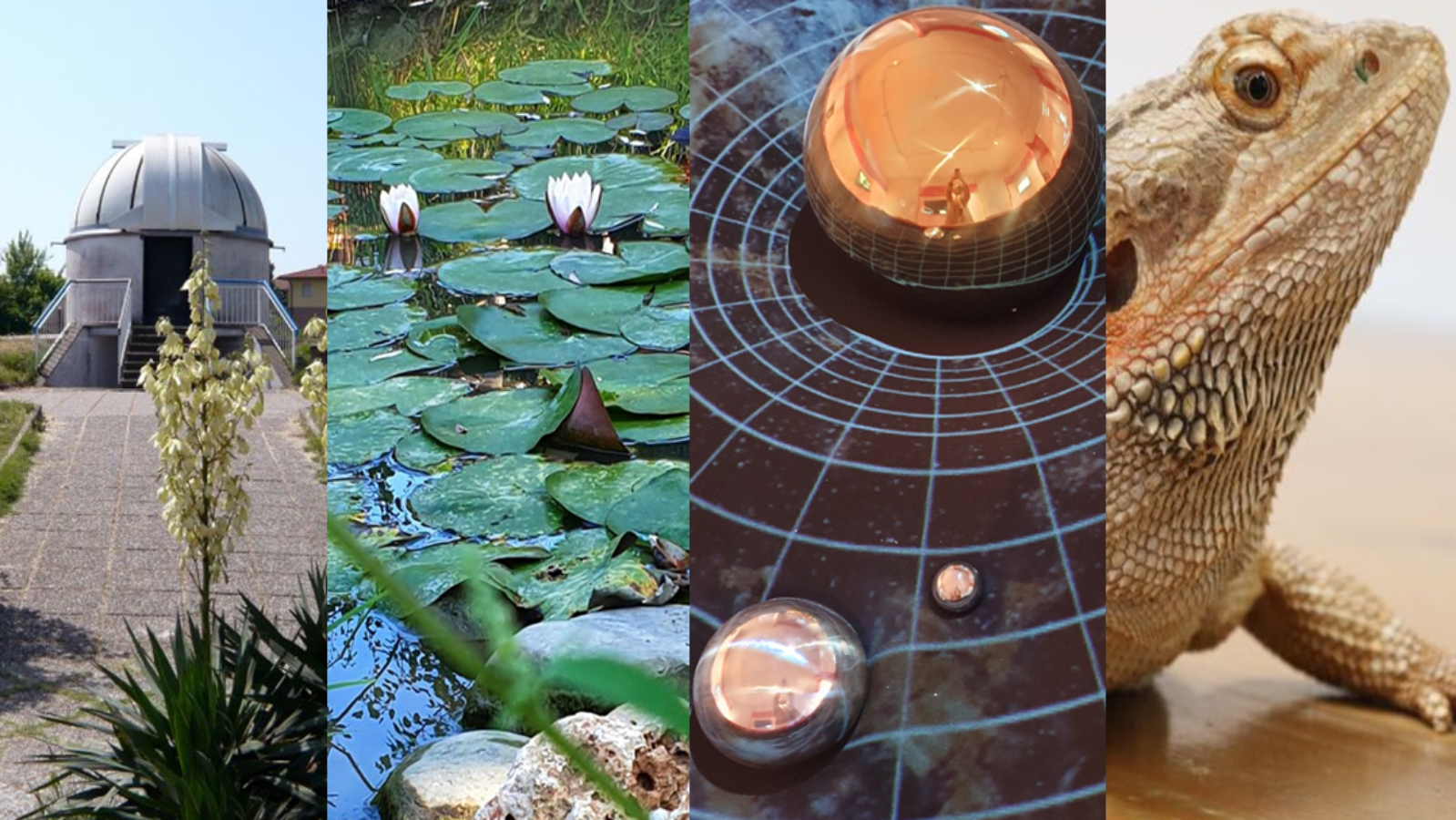The Museum opened in 2000 and has a large Planetarium, connected to a telescope. It is the most important scientific and dissemination center of the Bologna plain area. There are five sections: astronomy, natural history, naturalistics, entomology and physics.
The museum illustrates the relationship between sky and earth, plants and animals without forgetting the man and his connection with resources and technology.
It consists of different sections and the most important one is the Planetarium with a dome of over 9 meters in diameter. It is one of the biggest in Italy and it is able to reproduce the entire celestial vault (around 1500 “Stars”) as well as fulldome images and videos. The complex allows you to experience the Moon Phases, the precession of the Equinoxes, the planets’ orbits, the Sun path through the Zodiac and so on…
In addition to the virtual observations, it is possible to see real objects as well, thanks to the connection with the external telescope. At the Museum it is possible to enjoy one of the most important Italian collections of meteorites from all over the world.
The Museum of Sky and Earth represents the main scientific and dissemination center of the Bologna plain area, its main goal is the preservation, the research, the education and the dissemination of history and natural sciences.
Astronomical area
The Astronomical Area consists of an Observatory, a Meteorological Station and one of the largest planetarium in Italy, which hosts a collection of over 1000 meteorites and fulgurites, minerals, sections of trunks and models of scientific experiments. The Planetarium, with a dome over 9 meters in diameter, is able to reproduce the entire celestial vault as well as images and videos with a new fulldome projector; in 2021 a didactic sphere and virtual reality viewers were also introduced.
"Ulisse Aldrovandi" Botanical Garden
Entitled to the bolognese naturalist Ulisse Aldrovandi, it is located near the Museum of Sky and Earth and shows different species of trees and shrubs typical of the spontaneous flora of Emilia Romagna: an opportunity to understand the rich biodiversity of the Po Valley and, in general, of the Italian flora. Plants are distributed in systematic groups functional to their observation, or in small reconstructions of vegetation environments (Mediterranean, hydrophilic, xerophilous and tree-lined hedges).
"Physics Experience" Museum
At the Physics Experience Museum it is possible to move through the study of the space-time idea up to the recent scientific discoveries. In this journey, history, ancient astronomy and physics are deeply connected with art and painting.
The exhibition is enriched by the original private collection of slide rules belonging to Agostino Guidi and the artistic work of the physician and mathematician Lucio Saffaro (1929-1998). Noteworthy is the Lamborghini room, developed by the legendary car factory of Sant’Agata Bolognese. It offers visitors an insight into the physics concepts applied to a supersport car.
Interactive and immersive tools as well as in-depth videos are available for visitors to explore the museum in different and innovative ways.
Insect Laboratory
The Insect Laboratory is a "living museum" dedicated to entomology. Observing the insects raised at the facility allows you to closely analyze a great variety of complex forms and behaviors, such as the dance of bees or the social dynamics of an ant colony, also allowing you to address issues such as evolution and adaptations, ecosystems and food chains.
Map
Museum of the sky and the earth
Vicolo Baciadonne 1
40017 San Giovanni in Persiceto
Telephone: 0039 051 6871757
Email: segreteria@agenter.it
Interests
- Art & Culture

